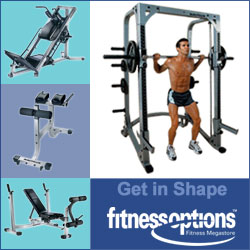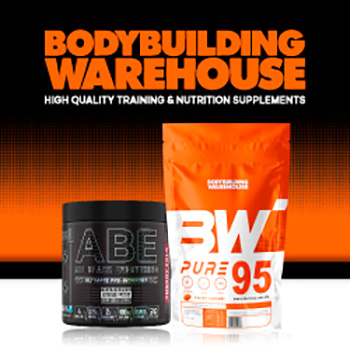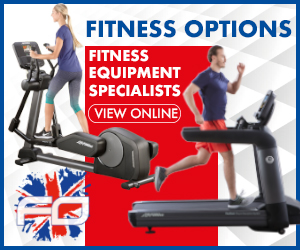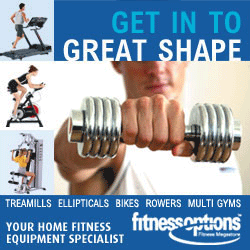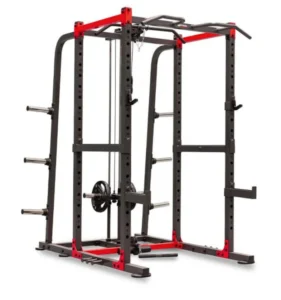
Summary of the Article
- Multi gym workout are an excellent all in one solution for total body training, allowing you to work all major muscle groups in one session without the need to switch between different pieces of equipment.
- Regular use of a multi gym can increase strength, muscle tone, and functional fitness, while being easier on your joints than many free weight alternatives.
- Multi gyms are space efficient, making them perfect for home gyms. Many models require less than 50 square feet of floor space.
- Multi gym workouts have built in safety features, making solo training safer and more effective than traditional free weight routines.
- PowerMax Fitness multi gyms are designed to deliver commercial quality results in a home setting, with options for every fitness level and space requirement.
Discovering the perfect workout solution that balances efficiency, effectiveness, and convenience can revolutionize your fitness journey. Multi gyms are the ultimate all in one training solution for anyone serious about increasing strength, improving body composition, and enhancing overall fitness without the hassle of managing multiple pieces of equipment.
Multi gym workouts are a versatile and effective way to exercise, combining strength training, functional movement, and progressive resistance. Whether you’re just starting out on your fitness journey or you’re a seasoned pro looking to upgrade your home workout setup, Fitness Option multi gyms offer the flexibility and quality to help you achieve impressive results.
One of the most attractive aspects of multi gym training is its simplicity. With a single piece of equipment, you can do a multitude of exercises that target every large muscle group, eliminating the need for many machines or weights that take up space. This ease of use makes it much easier to stick to a regular workout routine, which is the most important factor in achieving lasting fitness success.
Experience Rapid Body Transformation With Multi Gym Workouts
Multi gym workouts are one of the most effective ways to achieve a complete body transformation. Instead of having to move from one station to another or continuously change equipment like in traditional gyms, a good multi gym enables you to effortlessly switch between exercises. This continuous training method ensures your heart rate stays high, allowing you to gain both strength and cardiovascular benefits at the same time.
Multi gym exercises are especially beneficial for beginners and intermediate fitness lovers because of their controlled motion paths. These machines guide your movements along the best paths, helping to maintain the correct form and reducing the risk of injury. This is a key advantage when you’re pushing your limits to stimulate muscle growth and strength gains.
Perhaps the most significant advantage of multi gyms is that they allow for progressive training that can adapt to your increasing abilities. As you get stronger, you can adjust the resistance levels without having to buy more equipment. This scalability makes multi gym training ideal for long term fitness development as it continually challenges you as your body adapts and gets stronger.
7 Key Fitness Advantages of Multi Gym Workouts
The all inclusive character of multi gym training offers several fitness benefits that isolated exercise methods frequently overlook. Knowing these advantages helps clarify why multi gyms have turned into the main feature of efficient home fitness arrangements around the globe.
Developing Full Body Strength
Multi gyms are the perfect tool for balanced, full body strength development. With stations specifically designed for pushing, pulling, pressing, and lifting movements, these systems ensure that no major muscle group is neglected. This comprehensive approach prevents the common problem of muscular imbalances that can lead to posture problems and the risk of injury. Regular multi gym training typically results in noticeable strength improvements within 4-6 weeks, with users reporting functional benefits in everyday activities from carrying groceries to climbing stairs.
Training That Respects Your Time
We all lead busy lives, and because of this, it’s essential that our workouts are efficient. Training with a multi gym can dramatically cut down the time you spend working out. This is because you don’t have to keep changing the setup of your equipment, or travel to and from the gym. Studies have shown that a well structured 30-minute workout on a multi gym can be just as effective as a 60-minute workout at a traditional gym. This is because you don’t have to waste time transitioning between exercises. The efficiency of a multi gym workout makes it much easier to stick to a regular training schedule, even when you’re having a particularly busy week.
Multi gym workouts allow you to do circuit style training, where you quickly move from one exercise to another. This increases the number of calories you burn during your workout. Plus, your metabolism stays elevated for hours afterward, helping you burn more fat and build more muscle even when you’re not working out.
Better Muscle Tone
Multi gym exercises offer controlled resistance and a full range of motion, both of which are perfect for muscle toning. Unlike some free weight movements where some parts of the lift are easier than others, multi gym resistance keeps the tension constant throughout the entire movement. This constant tension is crucial for building the lean, toned muscles that many fitness enthusiasts want.
- Consistent resistance through full range of motion
- Ability to target specific muscle groups with isolation exercises
- Option to perform higher repetition sets for enhanced definition
- Reduced recovery time between workouts compared to heavy free weight training
Complete 4-Week Multi Gym Workout Plan
Transforming your body with a multi gym requires a structured approach that progressively challenges your muscles while allowing proper recovery. This comprehensive 4-week plan is designed to maximize your results by gradually increasing intensity and volume while targeting all major muscle groups for balanced development.
Introductory Regimen: Laying the Groundwork
This beginner friendly regimen is perfect for those who are new to strength training. It is designed to introduce your body to resistance exercise and help you establish proper movement patterns. During these initial sessions, your focus should be on learning the correct form, rather than lifting heavy weights. This regimen should be performed three times per week (Monday, Wednesday, Friday), with at least one rest day between sessions.
Start each workout with a 5-minute warm-up on your favourite cardio machine or by doing dynamic stretches. Do 2 sets of 10-12 reps for each exercise, resting 60 seconds between sets. The weight should be challenging but you should still be able to maintain good form throughout all the reps.
- Chest Press: Works out your pectoral muscles, shoulders, and triceps
- Lat Pulldown: Enhances back width and shoulder stability
- Leg Press: Builds your quadriceps, hamstrings, and glutes
- Seated Row: Strengthens your mid back and betters your posture
- Shoulder Press: Tones your deltoids and upper trapezius
- Triceps Pushdown: Isolates and reinforces your triceps
By the second week, you should be more familiar with the movements and should concentrate on maintaining tension throughout each repetition. Remember to keep track of your weights and repetitions to ensure progressive overload in the following weeks.
Intermediate Plan: Take it up a Notch
Once you’ve got the basics down, this intermediate plan will up the ante with more frequent and intense workouts to keep your body guessing. You’ll split your training into upper and lower body days, which will let you up the volume while still giving your body the recovery time it needs. Do upper body workouts on Monday and Thursday, lower body on Tuesday and Friday, and take Wednesday and the weekends off for rest or a bit of light cardio. For each exercise, do 3 sets of 8-10 reps with 45 seconds of rest in between, and make sure to really focus on the eccentric (or lowering) phase of each movement.
Advanced Program: Getting the Most Out of Your Muscles
For those who have been training for a while, this advanced program uses special techniques to get past plateaus and activate as many muscle fibres as possible. The program uses a push, pull, legs split that is done over six sessions a week with only one rest day, allowing each muscle group to be trained twice a week for the best growth stimulus.
For those who are more advanced, you can use techniques such as drop sets, which involve reducing the weight once you’ve reached your limit and continuing the set. You can also use supersets, which involve pairing exercises that complement each other and doing them without resting. Another technique is rest, pause training, which involves taking short 10-15 second breaks during a set to extend it beyond your normal limit. These techniques that increase intensity help create the metabolic stress and muscle damage that are necessary for continued progress in those who are more experienced. For more information on these techniques, you can explore multi gym exercises that target every muscle group.
Keep a close eye on your stats, including the amount of weight you’re lifting, the number of reps you’re doing, and the amount of time you’re resting to make sure you’re always improving. Each workout should take between 45 and 60 minutes and should include at least one compound exercise performed 6-8 times, followed by isolation exercises performed 8-12 times for full muscle growth.
Workout Variations to Avoid Plateaus
Your body can quickly get used to the same exercises, which can cause plateaus in strength and muscle growth. Avoid this by adding these multi gym workout variations every 4-6 weeks, change your grip width on pulling exercises, adjust your foot position on the leg press, change the tempo (slow negatives, pause reps), or change your rep ranges (heavy 5-6 rep sets versus lighter 15-20 rep sets).
Another successful approach involves playing around with training elements such as rest periods, the order of exercises, and how often you train. Even small adjustments like doing your usual workout in reverse order can provide enough variety to stimulate new adaptations and get past performance plateaus.
6 Multi Gym Exercises You Need to Know
- Chest Press: The go to exercise for chest building, also works your shoulders and triceps
- Lat Pulldown: Key for widening your back and stabilizing your shoulders
- Leg Press: A basic lower body compound movement
- Cable Rows: Important for thickening your back and improving your posture
- Bicep Curls: Focuses on arm development for a balanced physique
- Triceps Extensions: Rounds out arm development for a symmetrical look
These six exercises are the cornerstone of a successful multi gym workout, hitting all the major muscle groups with both compound and isolation exercises. If you can nail the form on these basic exercises, you’ll have the groundwork for all the advanced training techniques and program variations.
Although a multi gym allows for a variety of exercises, focusing on these key movements will give you the most bang for your buck. These exercises engage the most muscle fibre, trigger the most significant hormonal response, and result in the most substantial gains in functional strength.
For the best results, pay close attention to how you perform each exercise instead of only concentrating on the weight you are lifting. The mind muscle connection, which is when you actively concentrate on the muscles you are working during each repetition, can greatly improve muscle recruitment and growth compared to just lifting weights without thinking.
Let’s take a closer look at each of these key exercises to make sure you’re getting the most out of them in your workout routine.
1. Chest Press for Upper Body Strength
When it comes to upper body pushing power, the chest press is the go to exercise. It primarily focuses on the pectoralis major, but it also engages the anterior deltoids and triceps as secondary movers. The multi gym chest press keeps the tension constant throughout the movement, unlike a barbell bench press. This often allows for a greater range of motion, especially at the stretched position where the chest is most activated.
To perform this exercise correctly, sit with your back flat against the pad and your feet on the floor. Hold the handles with your hands slightly wider than your shoulders. Breathe out as you push the handles forward until your arms are straight but not locked. Breathe in as you slowly bring the resistance back to the starting position. Concentrate on your chest muscles contracting and stretching throughout the movement instead of just moving the weight.
Typical mistakes include too much arching of the lower back, letting the shoulders roll forward, or not getting a full range of motion. These errors lessen the activation of the chest and raise the risk of injury, especially to the shoulder joints. Keeping the right posture with the shoulders pulled back and down during the exercise maximizes the engagement of the chest while safeguarding your joints. For more tips on maintaining proper form, check out these multi gym exercises that target every muscle group.
2. Lat Pulldown for a Stronger Back
Lat pulldowns are the perfect exercise for strengthening your latissimus dorsa, those big, wing like muscles that stretch across your mid and lower back. They also work your biceps, rear deltoids, and rhomboids. This exercise is essential for developing a wider back and improving the stability of your shoulders, which can help improve your posture and reduce the risk of injury in your everyday activities.
Start by sitting down with your thighs under the pad and hold the bar with a grip that’s wider than your shoulders. Begin the movement by pushing your shoulder blades down, then pull the bar down to your upper chest while keeping your body upright. Carefully return to the starting position without letting the weight stack touch down between repetitions to keep constant tension on the muscles you’re working.
3. Leg Press for Lower Body Strength
The leg press is a multi gym’s primary lower body compound exercise, targeting the quadriceps, hamstrings, and gluteal muscles at the same time. This exercise allows you to load up the lower body muscles with minimal technical skill, making it a great choice for both beginners and advanced users.
Get on the machine, feet shoulder width apart on the platform, knees bent at roughly 90 degrees. Push through the middle of your foot (not your toes or heels) until your legs are straight but not locked, then control your descent back to the start. Keep the tension constant by avoiding the common error of letting the weight stack rest between reps.
The position of your feet can have a big impact on which muscles you’re using during the leg press. If you place your feet higher, you’ll be working your hamstrings and glutes more. But if you place them lower, you’ll be putting more stress on your quadriceps. Similarly, if you spread your feet wider apart, you’ll be working your inner thighs more. But if you keep them closer together, you’ll be putting more stress on the outer part of your quadriceps.
The leg press, unlike squats with free weights, doesn’t require complicated balance or core stabilization, so you can concentrate solely on building your legs. This is especially useful for people with back problems or mobility issues that could affect their squat form.
- Standard foot position: Shoulder width stance, mid platform height (balanced development)
- Wide stance, high foot placement: Maximum glute and hamstring emphasis
- Narrow stance, low foot placement: Greatest quadriceps activation
- Single leg variation: Addresses strength imbalances between legs
4. Cable Rows for Core Stability
The seated cable row develops back thickness, improves posture, and strengthens the crucial stabilizing muscles of the posterior chain. Unlike the lat pulldown which emphasizes width, rows target the middle back muscles including the rhomboids and middle trapezius, creating the depth and detail that completes an impressive back development.
For correct form, sit facing the machine with a slight bend in your knees and reach out to grasp the attachment. Keep your back straight as you pull the handle toward your midsection, driving your elbows back and squeezing your shoulder blades together. It’s easy to overlook the fact that your core is subtly engaged throughout the movement, providing additional strengthening benefits for your abs.
5. Bicep Curls for Toned Arms
Multi gyms are great for compound movements, but they also excel at specific isolation exercises like the cable bicep curl. This exercise targets the biceps brachia, giving you the peaked arm look that’s a sign of a well toned body. The cable mechanism provides constant tension, leading to better muscle activation than free weights, especially at the top of the curl.
Stand in front of the low pulley with your feet shoulder width apart. Hold the attachment with your palms facing up. Make sure your upper arms are stationary against your sides. Curl the weight up by bending at the elbow until your hands are near shoulder level. Control the eccentric (lowering) phase for a count of three to maximize micro trauma and subsequent hypertrophy in the biceps muscle fibres.
6. Triceps Extensions for Evenly Developed Arms
The triceps extension is the last piece of the puzzle for arm development. It targets the three headed triceps muscle, which makes up about two thirds of your upper arm mass. This exercise is vital for even arm development and enhanced performance in all pressing movements. To do this exercise, use the high pulley attachment. Stand with your back to the weight stack and hold the rope or bar with your elbows bent at 90 degrees. Extend your arms downward by straightening at the elbow joint only. Keep your upper arms still throughout the movement for maximum triceps isolation.
Typical Errors In Multi Gym Workouts That Hinder Progress
Despite the fact that multi gyms offer guided movement paths, there are a few typical errors that can greatly decrease the effectiveness of your training. Avoiding these mistakes ensures that you get the most out of each workout session, minimizes the risk of injury, and speeds up progress towards your fitness objectives.
Incorrect Machine Settings
One of the most important yet often ignored factors in effective multi gym workouts is correctly setting up the machine before you start your exercises. Each part of the machine seat height, back pad position, range limiters, and pivot points need to be adjusted to fit your unique body shape. If the machine isn’t set up right, the path the machine moves in won’t match the natural way your joints move. This can make the machine less effective and could even strain your joints. Make sure you take the time to adjust each station before you start your set. This will make sure the movement feels natural and the right muscles are working through the full range of motion.
Bad Workout Technique
Even with the structured movements of multi gyms, bad technique is still a frequent problem that lessens outcomes and raises the chance of injury. Major technique errors include using momentum instead of controlled muscle contraction, partial range of motion (not finishing the full movement), and incorrect body positioning that transfers work away from the muscles you’re trying to target. Always prioritize perfect technique over lifting heavier weights, as studies consistently demonstrate that good technique with moderate weight results in better muscle growth than poor technique with heavier weights.
Insufficient Progressive Overload
Many multi gym enthusiasts get too comfortable, doing the same exercises with the same weight, repetitions and rest periods week after week. Without progressive overload slowly increasing demands on your muscles adaptation halts and results flatten. Record your workouts carefully, trying to improve at least one performance variable (weight, repetitions, sets, decreased rest) each session. Micro dosing your progression with small, steady improvements results in impressive long term gains while reducing injury risk.
Another mistake people often make when trying to progress is adding more weight at the expense of their technique. Real progression means keeping perfect form and gradually adding more resistance, not sacrificing the quality of your movement for the sake of lifting heavier weights. Keep in mind that your muscles respond to tension and control, not the total amount of weight you’re lifting, especially when you start to lose form.
Choosing the Right Multi Gym for Your Goals
Multi Gym Selection Guide for Training Goals
General Fitness: Go for a 150-200lb weight stack, 6+ exercise stations
Bodybuilding: Opt for a 200lb+ weight stack, cable functionality for isolation work
Strength Training: Look for models with heavy weight stacks or plate loading options
Rehabilitation: Choose systems with precise resistance adjustments and ergonomic design
Limited Space: Choose compact vertical designs with folding options
Family Use: Choose adjustable components to accommodate different body sizesFor more insights, explore these multi gym exercises that target every muscle group.
Choosing the right multi gym is a balance between your fitness goals and practical considerations such as space and budget. The machine you choose will have a significant effect on your training experience and results, so it’s worth giving it some thought. The best multi gym for you will offer the exercises you need to meet your goals and will fit comfortably in the space you have.
When choosing a multi gym, never compromise on the build quality. It should have a thick gauge steel frame, a smooth pulley system, and upholstery that can withstand years of regular use. Reading user reviews that focus on long term durability can give you a better idea of the product than the manufacturer’s specifications and can help you identify common failure points in different models.
Think about making a purchase that will last by choosing a multi gym that can be expanded. Some systems let you add modules or stations as your training needs change, which could save you money compared to replacing the whole unit. This modular approach gives you flexibility as you get more fit and your exercise needs become more specific.
How Much Space Do You Need for a Home Gym?
Before you even think about buying a multi gym, you need to make sure you have enough room for it. This isn’t just about floor space, you also need to take into account the height of the machine, especially if you’re putting it in a room with a low ceiling. You should also leave a buffer zone of 2-3 feet around the machine to make sure you can use it safely and comfortably. And don’t forget to take into account the space you’ll need for any moving parts, like leg developers or press arms. If you’re putting your multi gym on a hard floor, it’s a good idea to put down some rubber flooring first. This will protect both your floor and your machine, and it will also help to reduce noise something your downstairs neighbours will thank you for if you live in an apartment.
What to Look for in a Weight Stack
The weight stack is the resistance core of your multi gym, and it should be carefully evaluated. You should consider both the maximum weight (which typically ranges from 150-300 pounds) and the increment sizes between weight plates. Smaller increments (5lbs or less) allow for more precise progression, which is especially valuable for smaller muscle groups and upper body exercises. Some high end models offer dual weight stacks, which allow for different resistance settings for various exercise stations, while others use plate loading systems. These systems offer virtually unlimited resistance potential, but they require additional weight plate purchases and more setup time between exercises.
Variety in Exercise Stations
When you’re looking at a multi gym, the variety of exercises you can do with it will greatly affect how versatile it is and how much you’ll use it over time. Don’t just count the number of stations, but also look at how well they work all the major muscle groups. A good multi gym should have a chest press, vertical press, lat pulldown, low pulley (for rows and curls), leg developer, and some kind of leg press or squat station. Some of the more advanced systems also have special stations for working your abs, triceps extensions, pec fly, and even attachments for functional training.
Think about how the stations handle compound movements (exercises that work multiple muscle groups at once) compared to isolation exercises (exercises that target specific muscles). A well rounded system will offer options for both types of training, allowing for comprehensive strength building and specific aesthetic refinement. The biomechanics of each station should feel natural and comfortable throughout the entire range of motion for your body proportions.
Cost-Effective Choices vs. High End Amenities
The price tags on multi gyms can vary greatly, from basic models that cost about £500 to commercial grade systems that can run over £2,500. While budget constraints are a reality, you should look at this purchase as a long term investment in your health. Entry level models usually have fewer stations, lighter weight stacks, and less refined biomechanics, but they can still provide effective workouts. Mid range options (£1,000-2,000) often offer the best value proposition, with enough exercise variety, sturdy construction, and respectable weight capacities to satisfy most home users.
Some of the features that may make it worth your while to invest more in a multi gym include smoother pulley systems that operate on bearings, movement paths that are optimized biomechanically, upholstery of a higher grade, longer warranties, and more sophisticated weight selection mechanisms like magnetic pins or systems that are adjustable by dial. Consider these features in light of your specific needs, rather than assuming that the most expensive option is the one you need.
Get Ready to Level Up Your Multi Gym Workout Today
With your newfound knowledge about multi gym benefits and the best ways to train, you’re all set to take your fitness to the next level with regular, progressive workouts. Keep in mind that the best workout routine is one you’ll stick to, and having a carefully chosen multi gym at your disposal removes many of the usual obstacles to exercise. Start with the basics we’ve outlined in this guide, keep a close eye on your progress, and tweak things as necessary to keep improving.
Getting the body and strength you want doesn’t come from taking shortcuts. It comes from using proven methods, staying disciplined, and being patient. Your multi gym has everything you need. The rest is up to you. You have to show up, push yourself the right amount, and rest enough between tough workouts. Fitness Option is here to help you on your fitness journey with the best equipment for the best results.
Commonly Asked Questions
Here are responses to the most frequently asked questions about multi gym workouts, from queries of beginners who are just beginning their fitness journey, to those of experienced trainers who want to maximize their results.
How often should I use a multi gym to see results?
To see the best results, try to have 3-4 multi gym workouts per week with at least one day of rest between workouts that target the same muscle groups. Beginners should start with full body workouts three times a week, allowing 48 hours for recovery between sessions. As you get more advanced, you might split your training into upper and lower body days, which allows for more volume while still having enough recovery time. Remember that muscles grow during recovery, not during the workout itself, so having enough rest is crucial for progress.
Being consistent is better than being occasionally intense. Regular workouts of moderate intensity yield better long term results than occasional workouts of extreme intensity. Studies have shown that visible improvements in muscle tone usually appear after 4-6 weeks of consistent training, with more significant changes in body composition appearing after 8-12 weeks.
How Often You Should Train On A Multi Gym Each Week
If you’re just starting out: Aim for 3 full body workouts every week, such as on Monday, Wednesday, and Friday
If you’re at the intermediate level: Try to get in 4 workouts each week, with 2 focusing on your upper body and 2 on your lower body
If you’re an advanced user: You should be working out 5-6 times a week, with a push, pull, legs split
If you’re in maintenance mode: 2-3 full body workouts each week should be enough
If you’re in rehabilitation: Follow the frequency recommended by your doctor or physical therapistDon’t just keep track of how often you work out, but also important factors such as total volume (sets x reps x weight), improvements in exercise technique, and subjective factors like energy levels and recovery quality. This comprehensive approach to tracking progress gives you a better idea of your progress than just counting the number of workouts you’ve completed.
Is it possible to gain a lot of muscle mass using only a multi gym?
Yes, it is. Multi gyms offer the three key factors for muscle growth, progressive resistance, full range of motion, and the ability to train until muscular fatigue. While free weights have traditionally been associated with maximum muscle building, this perception is more a result of gym culture than physiological reality. Research consistently shows that muscles respond to tension, not the tool that creates that tension. Many professional bodybuilders use both machine and free weight training for optimal development, recognizing that each has unique advantages for different training goals.
Do I need someone to spot me when I use a multi gym?
One of the biggest benefits of training on a multi gym is that you don’t need a spotter for most exercises. The guided movements, adjustable range limiters, and controlled resistance make multi gyms perfect for working out alone. If you can’t complete a repetition, you won’t get stuck under a barbell like you would with free weights. Instead, you can simply let go of the handles if you can’t do any more reps, which makes multi gyms especially useful for home gyms where you might not always have a workout buddy. This safety benefit lets you train until your muscles can’t do any more reps, which is a great way to stimulate muscle growth, without the risks that come with training with free weights.
How do you maintain a multi gym?
- Always check the cables for any fraying or damage, and replace them immediately if you see any issues
- Follow the manufacturer’s recommendations for lubricating guide rods and pulleys (usually every 3-6 months)
- Every quarter, make sure to tighten all nuts, bolts, and fasteners, and check for any loose connections
- After a sweaty workout, clean the upholstery with a mild soap solution and wipe it down
- Look for signs of wear or bending on the weight stack pin
- Periodically check the frame for any cracks or structural problems
Keeping your equipment in good condition significantly extends its lifespan and ensures it operates safely. Most manufacturers include detailed maintenance schedules in their user manuals, along with recommended lubricants and cleaning products specifically designed for fitness equipment. Following these guidelines will protect your investment and prevent more serious mechanical problems from developing.
Track when you perform each task by keeping a maintenance log. This will make it easier to follow recommended schedules and identify when components like cables might be approaching their replacement interval. Many manufacturers sell maintenance kits with all the necessary products and detailed instructions to keep your multi gym in optimal condition.
If you come across more serious problems or if you hear strange sounds, feel inconsistent resistance, or have worries about the structure, you should get in touch with the manufacturer’s support team or think about getting a professional service instead of trying to make major repairs yourself. Doing repairs the wrong way can make the equipment unsafe and cancel warranties.
Will I lose weight with multi gym workouts?
Multi gym workouts can be a powerful tool in your weight loss journey. Not only do these resistance training exercises burn calories during the workout itself, but they also help you build lean muscle mass. Why is that important? Because the more muscle you have, the higher your resting metabolic rate is. That means you’ll burn more calories even when you’re not working out. In fact, studies have shown that adding just three pounds of muscle can boost your resting metabolism by about 7%. Over time, that can add up to a significant calorie burn.
Multi gyms allow for compound movements that engage multiple large muscle groups at once, making them incredibly effective for burning calories. This effect can be enhanced by circuit style training, which involves moving quickly between exercises with little to no rest in between. This type of training can also create an “afterburn” effect (also known as excess post exercise oxygen consumption), which can continue to burn calories for hours after your workout is over. Research has found that this effect can increase total calorie burn by 6-15% beyond the workout itself.
Want to see real results from your workouts? Our fitness equipment is the key to reaching your goals. Whether you’re looking to lose weight, build muscle, or improve your overall health, we’ve got the tools and expertise to help you succeed. Click Here to discover how our fitness equipment can transform your body and your life.

